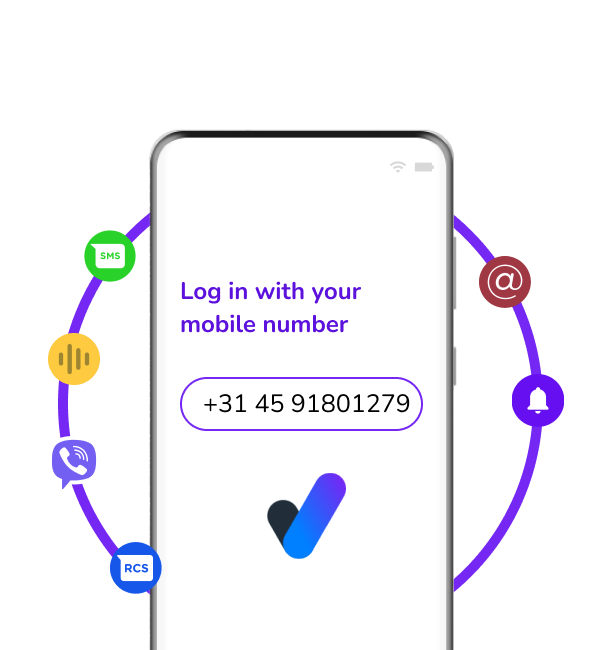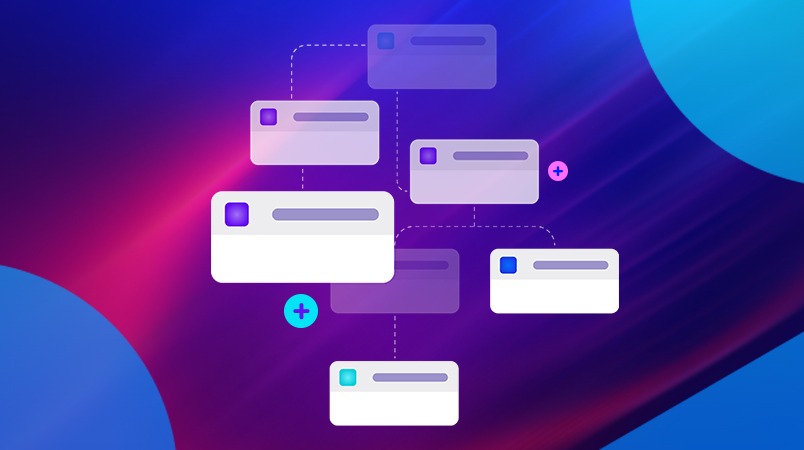
One API for the best verifications: Number Verify, OTP channels using optimized routing. Our verification services are plug and play.
Regardless of which channel you use or how many trials it takes, you only pay for successful verifications. Without additional channel costs.
With optimal routing to relevant channels and our platform's global reach, we can ensure a close to 100% delivery rate for your verification messages.
Say goodbye to the headache of setting up and deciding what verification channels you should adopt and implement to keep your business secure. We'll take care of it for you! And the best part? You will only pay when a verification is successful, without additional channel costs.
We have done all the hard work for you! Fallback channels, number configuration, priority routing and fraud prevention are all accessible via one easily integrated connection.
When sending out verification checks, we prioritize the best verification channels for your use case: From Number Verify (silent SIM card verification) to OTPs.
Add an extra security layer to secure your digital services. No need to manually monitor to detect fraudulent traffic - our solution will do that for you to save time and resources.
Authenticate users with a new, quick and secure verification channel: Number Verify! It leverages the unique characteristics of the SIM card to verify users, all they need to do is fill out their phone number! The verification process will happen in the background (silently) via network operators, making it inherently more safe and secure than traditional authentication methods that rely on passwords, knowledge-based authentication, physical tokens, or OTPs.
Enhanced Security
More Convenient
Fraud Prevention
Cost-Effective
Prioritize the latest technologies like Number Verify to authenticate users. Is Number Verify unavailable? Then our smart verification routing will send out a security code to the most secure and convenient OTP fallback channel for your audience. Successful verification guaranteed!
Improve delivery and conversion rates
Decrease non-delivered OTPs
Optimize your costs (only pay for successful verifications)
Be compliant with local regulations
Onboard and grant access to users in a smooth and secure manner
Protect data or monetary transactions from fraudsters
Monitor logins and accounts to prevent unauthorized access
Double-check users by confirming their mobile numbers
Set up traffic rules and monitoring to detect and prevent fraud

One API, multiple OTP channels. Choose the perfect channels for your audience and improve the user experience.
Build and configure your own tailored verification and security solution with 9 available channels to perfectly fit existing processes.
The CM Safeguard suite contains an extensive set of tools to help protect your account from fraudulent activity. Destination Management, AI anomaly detection, Recipient Limits, Account Limits, Alerts
With cybercrime on the rise, it's more important than ever to secure your online data and customers, if you don't want to become the next security breach headline. It can be difficult to choose between security solutions, and using tools from multiple suppliers can even be counterproductive and leave your business vulnerable for fraud. This is why we strive to make it easy - One API for all verification use cases.
A One Time Password or OTP is a security code designed to be used for a single login attempt, to minimize the risk of fraudulent login attempts and maintain high security. It’s a string of characters or numbers automatically generated and sent to the user’s phone via SMS, Voice, or Push message.
The OTP has become the standard method worldwide of enabling a login when special circumstances apply, such as validating a new account or confirming a transaction is legitimate.
Providers like CM.com offer OTPs as a service, with a secure platform for receiving or initiating OTP requests, sending the OTP as a text or other channel, and verifying the OTP was entered correctly, so the transaction can go ahead.
The infrastructure for making use of one-time passwords integrates with your website or application using an API. This is how a site “knows” whether an entered OTP is correct or not, with safeguards like checking it’s within the time window.
There are several ways to send an OTP. Some give the option of receiving OTPs by email, although this tends to be less secure. Other providers even enable OTPs as voicemails, stating the PIN aloud when the customer checks the mailbox.
But by far the most common way to send OTPs is by Push or text messaging, typically an SMS or even WhatsApp message to the customer’s mobile phone.
Read moreAn OTP is generated automatically as a semi-random number or string of characters. There is no way to predict what the OTP will be ahead of time. OTPs are valid for a single login session or transaction, enhancing security by reducing the risk of unauthorized access even if the password is intercepted. Once used, the OTP expires, ensuring it cannot be reused for future logins or transactions.
In Dubai’s fast-paced real estate market, companies receive hundreds of property inquiries every day. Buyers expect instant answers about availability, pricing, financing options, and next steps, often outside business hours and in multiple languages. For real estate agents, this creates an enormous workload: qualifying leads, answering (repetitive) questions, scheduling viewings, and chasing prospects who have become unresponsive. Without automation and the right workflows, real estate companies risk losing both efficiency and valuable opportunities. HALO, CM.com’s Agentic AI-powered platform, can transform these processes by streamlining the entire workflow. Besides, AI-agents work 24/7, deliver human-like responses, and handle inquiries instantly. They qualify leads, streamline routine tasks, and free up real estate agents to focus on what really matters: closing deals and building stronger client relationships.
The way consumers search for and process information online is rapidly changing thanks to AI. Where we used to type in search terms, scroll through dozens of results, and manually filter them, we are now getting used to having conversations. With ChatGPT, Google’s AI features, and other assistants, answers come faster and are more relevant. That same way of interacting is now taking over e-commerce at high speed. For retailers, this is the moment to step in: the webshop as we know it—where customers have to actively search themselves—is giving way to personal conversations that directly lead to action.
Chatbots have been a valuable tool in the automation journey, helping businesses handle simple tasks and provide instant responses to customers. However, as customer expectations evolve and business operations grow more complex, chatbots are no longer enough. The future lies in virtual agents: intelligent, autonomous systems that go beyond the limitations of chatbots to deliver seamless, personalized, and efficient interactions. This isn’t about choosing between two tools; it’s about embracing the natural evolution of automation. In this blog, we’ll explore how virtual agents differ from chatbots, why they represent the next step forward, and what they can deliver for your business.
An AI platform isn’t just another tool you purchase. It’s the foundation on which your organization operates and innovates. The choices you make today will shape how you work in the future. While you may start with just a few agents supporting specific use cases, over time more processes will be taken over by agents. That’s why it’s critical to ensure the foundation you lay now is cohesive, scalable, and backed by solid governance and compliance.
According to IDC’s State of Data Science and Analytics report, data is becoming increasingly critical to success in the digital economy. This is particularly true for the retail & eCommerce industry, where attribution data is one of the most vital components of maximizing customer journeys. This data allows businesses to attribute revenue generated to paid marketing efforts by opening data driving insights across various customer touchpoints, including paid search, display, email, social media, organic search, and referrals.
In a world where AI agents are becoming the norm, the real challenge isn’t understanding what they can do but imagining how they can work for you. AI Agents are more than just automation tools; they’re customizable digital colleagues, ready to take on roles tailored to your unique business needs. The possibilities are endless, but it’s not always easy to know where to start. It's time to spark your creativity. From streamlining niche processes to handling tasks you didn’t even realize could be automated, AI Agents can integrate seamlessly into your team. Here are some fresh ideas to inspire your next digital colleague.
Voice communication remains one of the most powerful ways to engage customers, build relationships, and drive conversions. In a world where customer expectations are higher than ever, businesses need a reliable, scalable, and intelligent Voice solution to stay ahead.
You start with one agent, and before you know it, you will have an entire agentic workforce! Plan ahead and future-proof your AI endeavors with seamless integrations and monitored control.
AI innovations in customer service are emerging more rapidly than ever before, especially with the latest addition of Agentic AI and it’s AI Agents. We spoke with Wael Ali, our Regional Director MEA, on how these AI advancements are transforming customer interactions and enhancing the experience. With Wael's expertise and vision, discover the future of customer service and what it means for businesses today. Whether you're an AI enthusiast or just curious about the future, you won't want to miss these engaging insights!
Select a region to show relevant information. This may change the language.









